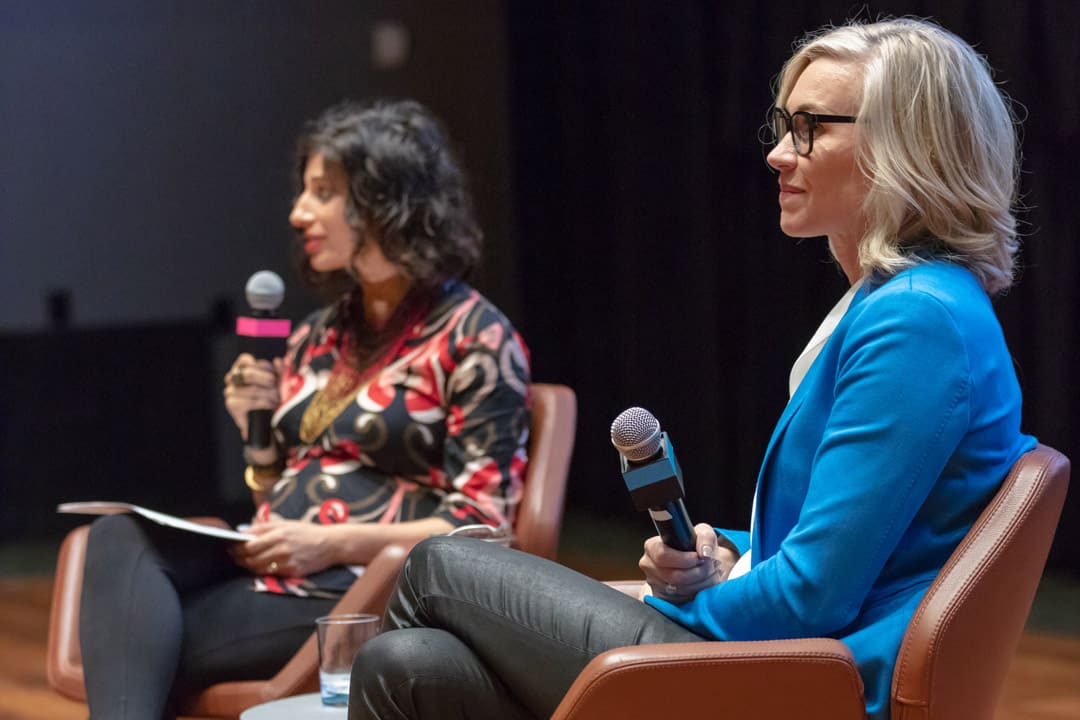Toronto mayoral candidate Jennifer Keesmaat spoke at an event organized by the Urban Studies Student Union at Innis Town Hall on September 24, discussing her platform and answering questions. Standing ahead of me in line to meet her, some Urban Studies students conversed: “One would think an urban planner is suited to govern a major city… unless you’re Robert Moses.”
In comparison with the legendary, brash, and successful New York City ‘master planner,’ Keesmaat could not be more similar and yet more different. If elected, there would be an equal level of risk and markedly less reward.
To put this in context, Keesmaat began the evening as one would expect from the typecast municipal politician: smiling widely, acting down-to-earth, encouraging participation, and showing high-pitched enthusiasm on local issues. Some prepared questions from the moderator only complemented this theme as they essentially allowed Keesmaat to reiterate her stump-speech talking points. The open Q&A session thereafter, however, proved slightly more eventful.
Forum Research recently reported that public transit was the top issue for 70 per cent of Toronto voters. It was therefore not a surprise when Keesmaat was asked about her transit plan for revamping the TTC. Seeking to expand light rail corridors and keep the controversial Scarborough subway, Keesmaat’s plan is estimated to cost $50 billion — over four times the city’s annual budget. Keesmaat was pressed on how she would pay for it and ensure that deficits would be stable and fares would not go up.
Keesmaat did not respond well. She pivoted the subway issue to the province, which has agreed to pay its $6.8 billion cost, and launched into platitudes on the importance of transit for communities — while making time to criticize Mayor John Tory for his SmartTrack station-expansion plan. Oft-labelled by her as drafted “on the back of a napkin,” her plan happens to be one that she worked on for three years as Chief Planner in Tory’s government. A follow-up question was denied, leaving her relieved of further scrutiny.
Other questions pertained to the issue of public housing, which Keesmaat identified as an area that young people can get most involved, alongside transit. In seeking to address concerns raised about rising property prices, which particularly hurt minorities and middle-low income groups, Keesmaat’s response was better than on transit. She touted a generic plan to build 100,000 more homes.
However, she still did little to address core issues. Indeed, the purchase of land for luxury developments has sent housing prices and living costs soaring across Toronto, particularly downtown, over the last several years. Keesmat’s avoidance of this issue means little promise of change for vulnerable working-class Torontonians, all while her own platform, according to the Toronto Star, offers developers incentives to build on city land and gives no details on property taxes.
To be fair, Keesmaat’s answers to less challenging questions were appreciable, particularly on consensus issues of public safety and community engagement. But those predictable responses are of little value when compared to the relevant issues left unaddressed, especially by a candidate headed to the polls in less than a month.
That being said, this dearth isn’t entirely Keesmaat’s fault. The audience present could have asked far more critical questions and pressed Keesmaat on controversial issues: the rising homicide rate and the City Council size reduction, among others.
A society will only lose and politicians will only gain from citizens not being appropriately and vigorously critical where most relevant. Doing so is our civic duty. This may truly be, to cite Keesmaat’s words, the kind of “community engagement” that we need to improve our city.
Arjun Singh is a first-year Political Science student at New College.


